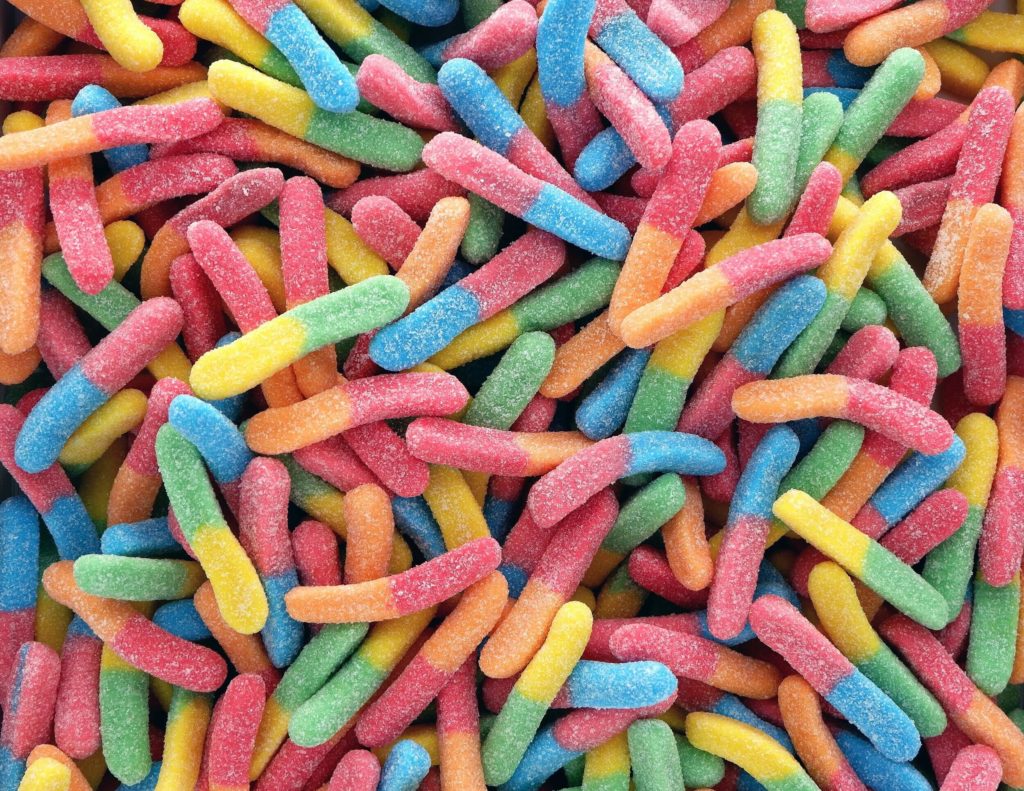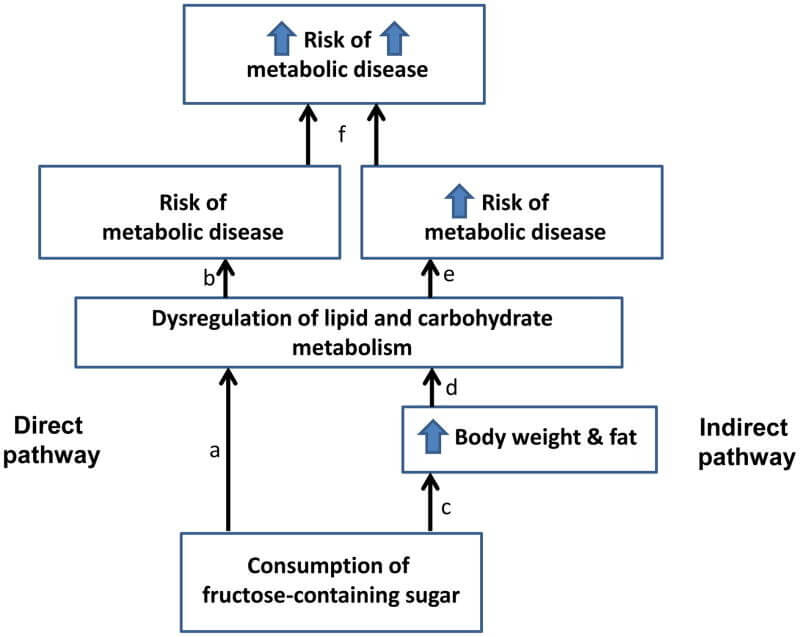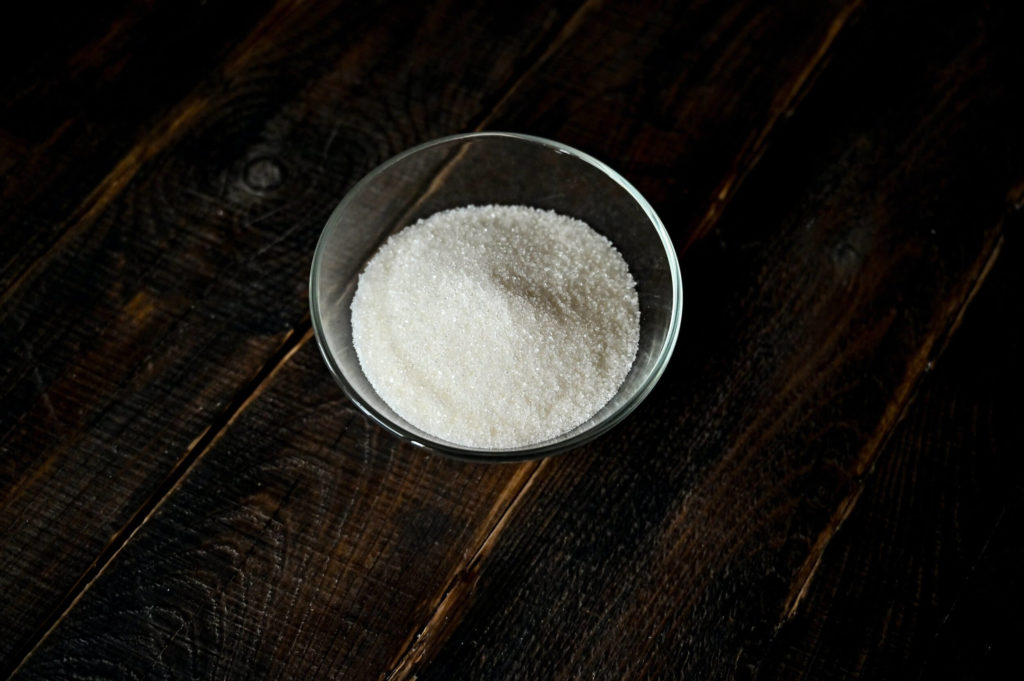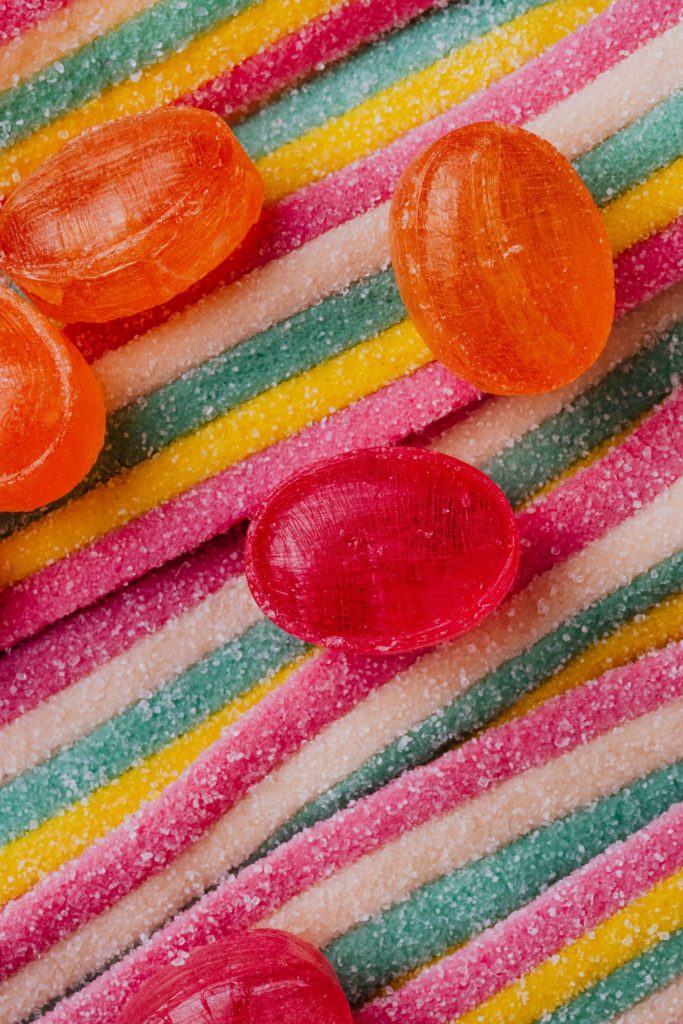Sugar can be a friend or a foe. On the one hand, it tastes great and is an integral part of our food consumption patterns, stoking the reward centre in our brain by releasing dopamine.
On the other hand, sugar has been associated with addictive behaviour and criticised as ‘a drug’. Let’s see what it’s made up of, and what we can do to balance our sugar intake.

Highlights
- Sugar is not your enemy. Natural sugars, found in fruits, are more nutritious in comparison,
- Refined sugar in moderation is mostly harmless, but there is a tendency to consume it mindlessly. No sugar is completely calorie-free,
- The best approach to incorporating sugar in your diet involves reducing added sugar, exercising—especially resistance training—and finding healthier alternative sweeteners like stevia and erythritol.
What is Sugar?
Sugar is a simple carbohydrate. While it mostly refers to sucrose or table sugar, the word encompasses all sweet carbohydrates. Your body breaks down carbohydrates into simple sugars such as glucose, which is the preferred source of energy for cells throughout the body.
There are a number of soluble carbohydrates that are sweet-tasting and commonly used in food as sugar. In addition to glucose, fructose, and galactose, simple sugars also include fructose, fructose, and galactose
Types of Sugars
Sugar comes in different types; some are man-made, while others are formed naturally. The four main kinds of sugar—known to us by varied names—are glucose, fructose, sucrose, and lactose. Broadly, sugar falls into two categories:
1. Natural sugars:
These sugars are consumed in the least processed form. For instance, fruit contains fructose, and dairy products have lactose. They have the essential nutrients that can support holistic health.
Additionally, sugars occurring naturally are often paired with fibre, which helps in slowing down the speed with which sugar levels rise in your blood. Fibre cannot be disintegrated into sugar molecules and travels through the body undigested. Consequently, your metabolism maintains the necessary glucose stability, and you feel satiated for a longer period of time after eating.
2. Refined sugars:
Here’s where part of the problem starts. Refined sugar is added sugar. It comes from sugar beet or sugarcane. When sugar is refined, it means that a natural ingredient is processed extensively to extract the sugar from the original source of the food.
In this extraction process, important nutrients are eliminated, and fibre is separated from the sugar. Refined sugar translates into empty calories. Its purpose is flavour enhancement but it doesn’t have any nutritional value.
Additionally, sugar can be chemically manufactured and added to processed foods. For instance, sucrose is the result of refinement and chemical processing. When the body breaks it down, it digests quickly and spikes blood sugar and insulin levels.
Fructose vs Glucose Metabolism
Fructose and glucose are simple, monosaccharide sugars (carbohydrates made of only one saccharide unit) that form the most basic units of carbohydrates.
Glucose is absorbed and transported to the cells in your body to fuel your metabolism. In case of excessive energy intake, another pathway is used to store it in the form of glycogen.
Lastly, it is converted to fatty acids and deposited in fat tissues in the form of triglycerides.
Fructose, on the other hand, gets metabolized mainly in the liver. The amount of acetyl CoA and glycerol-3-phosphate (by-products of fructose metabolism) entering liver cells is unregulated.
This can possibly give rise to unrestricted lipogenesis—the process of fatty acid and triglyceride synthesis from glucose or other substrates. It takes place mainly in the liver. Fructose activates lipogenesis, independent of insulin.
To put it simply, fructose can end up as glucose, fatty acids or lactate. Sucrose, high-fructose corn syrup (HCFS), honey and fruit all yield significant amounts of fructose. Fructose metabolism bypasses a step that is present in glucose processing.
This step is the rate-limiting conversion of glucose to glucose glucose-1,6 biphosphate. Because of this, insulin secretion is not activated. Insulin is the hormone that regulates blood sugar levels. Hence, the body is unaware of the increase in monosaccharide sugar in large amounts.
This is one of the many explanations on why both fructose and glucose lead to obesity.
Unnatural food items such as HCFS have low or no nutritional value. It also causes damage to the gut and brain health.
A study found that the composition of the gut microbiome was evaluated and was found to be negatively affected by a high intake of sucrose and fructose.
Another study, conducted on mice, found that a high fructose/glucose diet affected a beneficial type of bacteria, Bacteroides thetaiotaomicron.
The species are connected to the ability to process certain food items that are healthy, such as vegetables.
Fructose obstructs the production of proteins that foster the growth of beneficial gut microbes. Sucrose has been found to block the production of ROC, a protein that helps in the colonisation of this bacteria in the gut.

Does Sugar Cause Metabolic Syndrome?
A metabolic syndrome is a group of conditions that occur together, increasing your risk of heart disease, stroke, and type 2 diabetes.
These conditions range from increased blood pressure and high fasting blood sugar to excess body fat around the waist and abnormal cholesterol or triglyceride levels.
A study concluded that sugar-sweetened beverages play a role in obesity, metabolic syndrome and fatty liver disease. What exactly is metabolic syndrome?
Metabolic syndrome is closely linked to being overweight or obese and inactivity.
Most importantly, it’s also associated with a condition called insulin resistance. Usually, your digestive system breaks down the food you consume into sugar. Insulin is a hormone that is produced by your pancreas to help the sugar make its way into your cells to be used as fuel.
Research reveals that high consumption of fructose (over 100 g/d) can reduce insulin sensitivity. When your insulin sensitivity is low, it puts pressure on your pancreas to produce more insulin to clear the sugar in your blood.
In individuals who have insulin resistance, their cells don’t respond well to insulin, barring the glucose from entering the cells with ease. The sugar level in your blood rises over time even as your body produces more insulin to try to lower your blood sugar.
The reasons for insulin resistance remain complex. Consistently high levels of blood glucose develop and progress into prediabetes and type 2 diabetes if a person does not adopt management strategies and receive treatment.

Navigating Sugar to address Metabolic Health
Metabolic health is defined as having ideal levels of blood sugar, triglycerides, high-density lipoprotein (HDL) cholesterol, blood pressure, and waist circumference, without using medications.
There are ways to change your relationship with sugar and know how the body metabolizes sugar?. Here are some steps to take:
*Please note: It is important to consult your doctor before making any dietary changes.
1.Reducing added sugar

Reading food labels can be a smart way to closely monitor the intake of added sugar. Added sugar is generally camouflaged on food packaging. Here are some of the names for added sugar that you can try to either avoid or cut back on:
- brown sugar
- corn sweetener
- corn syrup
- fruit juice concentrates
- high-fructose corn syrup
- honey
- invert sugar
- malt sugar
- molasses
- syrup sugar molecules ending in “ose” (dextrose, fructose, glucose, lactose, maltose, sucrose)
- coconut sugar
- agave nectar
- rice syrup
Total sugar, which also includes added sugar, is often listed in grams. Make sure you take note of not only the number of grams of sugar per serving but also the total number of servings.
While it may only say 10 grams of sugar per serving, the number of servings you take can lead to you consuming 30 to 40 grams of sugar without even realising it.
Researchers have noted that about half of added sugar comes by way from beverages. A study published in Public Health found that about two-thirds of coffee drinkers and one-third of tea drinkers put sugar or sugary flavourings in their drinks.
Researchers additionally noted that more than 60% of the calories in their beverages came from added sugar.
2.Exercise
Regular exercise is one of the best ways to increase insulin sensitivity.
It helps move sugar into the muscles for storage and facilitates an immediate increase in insulin sensitivity which lasts for 2 to 48 hours, depending on the exercise.
A study reported that 60 minutes of cycling on a machine at a moderate pace increased insulin sensitivity for 48 hours among healthy volunteers.
Many studies indicate that resistance training increased insulin sensitivity among men and women with or without diabetes.
For instance, a study of men who were overweight but didn’t have diabetes demonstrated that when participants performed resistance training for as long as 3 months, their insulin sensitivity increased independent of other factors like weight loss.
While both aerobic and resistance training increase insulin sensitivity, combining both in your routine appears to be most effective.
3.Alternatives to sugar
There are well-known alternatives to sugar that are considered safe with little to no side effects, such as stevia and erythritol.
- Stevia
Stevia is a plant that has been used to sweeten beverages and make tea. It’s thought to have been used since the 16th century as a sweetener. It’s long been touted as a healthier alternative to sucrose due to it being very low-calorie. It’s so low that it’s considered “no calorie.”
Does Stevia have any side effects like spike and crash?
Studies have shown that stevia extract is free from side effects.
Purified steviol glycosides are added to foods. These are observed to be safe by the Food and Drug Administration (FDA). However, whole leaf stevia needs more research to label it safe, which is different from stevia extract.
Initially, it was believed that stevia poses a threat to the kidneys. However, a study done on rats suggested that that stevia extract may help to protect the organ and reduce the impact of diabetes.
Since some products derived from stevia contain sugar alcohols, individuals who are sensitive to them may experience bloating, cramps, diarrhea, etc. Highly purified stevia and moderate usage will not cause these side effects and can be consumed without worry.
- Erythritol
Erythritol is a sugar alcohol. Most sugar alcohols are found in small quantities in natural foods like fruits and vegetables. Since our bodies don’t have the required enzymes to break it down, the compound essentially gets into the blood when consumed and then excreted without any change.
What’s more, it’s got 0.24 calories per gram, in comparison to 4 calories per gram for sugar. Studies done on healthy individuals consuming erythritol saw no change in blood glucose and insulin levels. hence erythritol can’t cause blood sugar spikes
Conclusion
Sugar is not your enemy. Natural sugars, found in fruits, are more nutritious in comparison. Refined sugar in moderation is mostly harmless, but there is a tendency to consume it mindlessly.
No sugar is completely calorie-free. While it could be tough to completely eliminate refined sugar from your diet, it’s important to cut back and consciously control its intake.
Its adverse effects on metabolism have been observed by a sizable number of studies, claiming that sugar can cause metabolic syndrome, among other diseases.
However, studies on this subject are limited and have been known to have conflicting results.
The best approach to incorporating sugar in your diet involves reducing added sugar, exercising—especially resistance training—and finding healthier alternative sweeteners like stevia and erythritol.
Formulating a conscious approach while dealing with sugar, understanding its impact on your body, being aware of your emotional relationship with sugar, and having an active lifestyle could help you be in charge of your overall health.
Disclaimer: The contents of this article are for general information and educational purposes only. It neither provides any medical advice nor intends to substitute professional medical opinion on the treatment, diagnosis, prevention or alleviation of any disease, disorder or disability. Always consult with your doctor or qualified healthcare professional about your health condition and/or concerns and before undertaking a new healthcare regimen including making any dietary or lifestyle changes.
References
- Sweetener, herbal extract powder from Stevia leaf
- Additional Information about High-Intensity Sweeteners Permitted for Use in Food in the United States | FDA
- Antioxidant, anti-diabetic and renal protective properties of Stevia rebaudiana
- Sugar Can Keep Good Microbes From Colonizing Your Gut | NOVA | PBS
- Dietary sugar and body weight: have we reached a crisis in the epidemic of obesity and diabetes?: health be damned! Pour on the sugar








